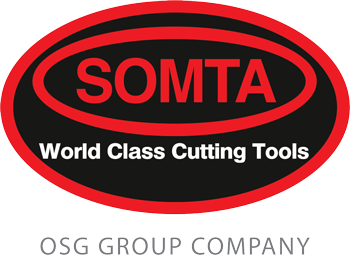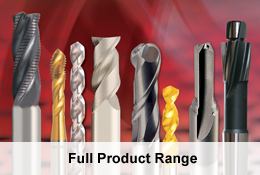Job Coating Division
The principle behind cutting edge material design
To combine the highest fracture resistance in the bulk substrate and the best wear resistance in the coating
 Somta has an integrated state-of-the art Balzers PVD Rapid Coating System and a NEW PerformCoat PfC540 PVD Coating Machine in its manufacturing & coating programme.
Somta has an integrated state-of-the art Balzers PVD Rapid Coating System and a NEW PerformCoat PfC540 PVD Coating Machine in its manufacturing & coating programme.

For more information on the coatings we offer, view the Job Coating Division Leaflet.
Main benefits of Coatings on Somta Cutting Tools
To gain the most benefit, it is important to match coating to substrate and workpiece material.
High Vanadium
– Improves toughness
High Cobalt
– Increases thermal resistance
Better sliding properties due to higher surface quality
– Improved chip flow
– Lower susceptibility to cold welding
– Enhanced workpiece surface quality
Increased hardness and residual compressive stress ratio
– Outstanding fidelity of edge geometry
– Excellent coating adhesion
– Uniform wear behaviour
Greater wear resistance
– Lower tooling costs
– Increased tool service life
– Fewer tool changes
– Extra regrinding cycles
Greater thermal and chemical resistance
– Dry machining
– Higher cutting speeds and feeds
– Less cratering
In addition to coating our own tooling, Somta coats gear cutting tools, piercing punches, moulds, dies, dental inserts, broaching blades and inserts of all different sizes for customers. Coating these items can improve their life span by 200% to 300% and when used in certain applications, can increase speeds and feeds by as much as 50%. Somta can coat any component up to 600x600x650mm (WxDxH).
 Gear cutting tools especially are more expensive than common cutting tools therefore cost savings on them are essential. Coating your gear cutter in the same way you do other cutting tools reduces wear by preventing direct contact of chips with the tool, reducing build up along the cutting edge and avoiding welding of chips to the tool.
Gear cutting tools especially are more expensive than common cutting tools therefore cost savings on them are essential. Coating your gear cutter in the same way you do other cutting tools reduces wear by preventing direct contact of chips with the tool, reducing build up along the cutting edge and avoiding welding of chips to the tool.
The high hardness of a coating prevents abrasive wear on the tool, and the lower coefficient of friction reduces the heat and wear generated during cutting operations. Thermal stress on the tool is reduced due to the low thermal conductivity of coatings, which allows heat to be retained in the chip.













